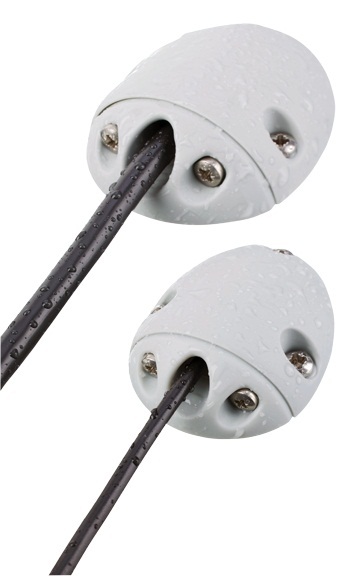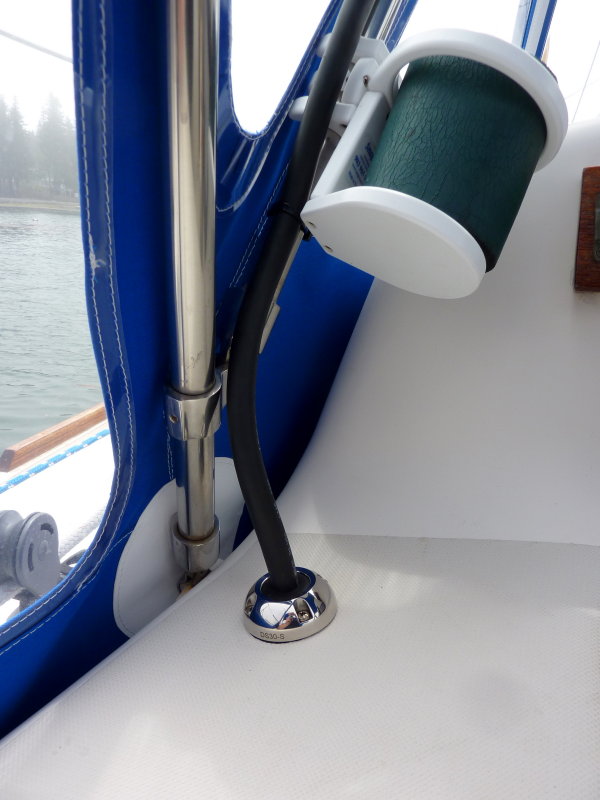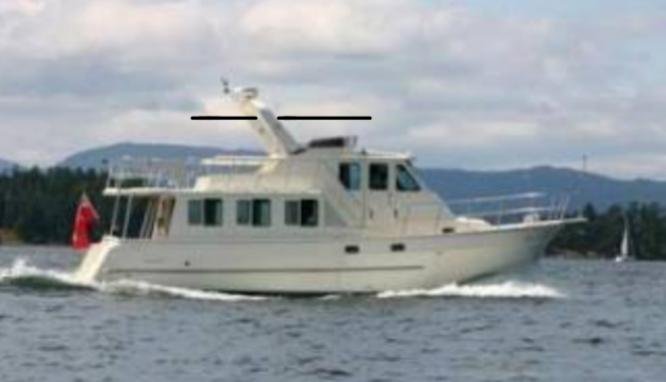dhays
Guru
- Joined
- May 26, 2015
- Messages
- 9,045
- Location
- United States
- Vessel Name
- Kinship
- Vessel Make
- North Pacific 43
I have been hijacking other threads so I decided I would start my own.
y'all have been very helpful in improving my understanding. I do have a few more questions and really hope you don't mind.
Situation: I am looking to place one 265w solar panel on my PH roof. Only one panel because that is all that I can conveniently fit on my boat.
A comment that psneed made in a solar thread a while ago has stuck with me. He said something along the lines that while his solar system may not be "perfect" it works well for him. Mathew 5:48 notwithstanding, I don't need to get a perfect system, just something that will help me keep the batteries charged when we stray further from home.
1. Placement of controller.
My limited understanding is that the charge controller should likely be located near the batteries as opposed to near the panel. The panel will put out higher voltage than the charge controller and so current from the panel to the controller will be less than from the controller to the battery. Putting the controller next to the battery means a shorter run for the larger wire needed for the higher current and using a smaller AWG wire for the run from Panel to controller. I think I would use 8 AWG from panel to controller in this scenario.
I would like opinions on another option. There is a DC panel in the PH. There is a 2/0 (maybe a 1/0 I will need to check) cable running from a bussbar there to the battery bank. Couldn't I just connect the controller output to that? This would make installation a lot easier. Instead of running 8 AWG wire from the pilothouse roof to the aft lazarette, I could just run the wire from the panel to the controller in the PH and connect the controller output to the bussbar.
Unless I am missing something, this should charge the batteries just fine. The only downside would be that I would't have temperature monitoring of the batteries. However, the batteries are in an aft space that is shaded and sitting in water that is normally right around 50 degrees. Also, the max that the charge controller would be putting out would be 30 amps, nothing like the 125 amps that my shore charger kicks out.
2. Running wire through the PH roof.
This is a simple and simpleminded question. I will need to run the panel wire through the PH roof. How do I do that without creating leaking issues?
y'all have been very helpful in improving my understanding. I do have a few more questions and really hope you don't mind.
Situation: I am looking to place one 265w solar panel on my PH roof. Only one panel because that is all that I can conveniently fit on my boat.
A comment that psneed made in a solar thread a while ago has stuck with me. He said something along the lines that while his solar system may not be "perfect" it works well for him. Mathew 5:48 notwithstanding, I don't need to get a perfect system, just something that will help me keep the batteries charged when we stray further from home.
1. Placement of controller.
My limited understanding is that the charge controller should likely be located near the batteries as opposed to near the panel. The panel will put out higher voltage than the charge controller and so current from the panel to the controller will be less than from the controller to the battery. Putting the controller next to the battery means a shorter run for the larger wire needed for the higher current and using a smaller AWG wire for the run from Panel to controller. I think I would use 8 AWG from panel to controller in this scenario.
I would like opinions on another option. There is a DC panel in the PH. There is a 2/0 (maybe a 1/0 I will need to check) cable running from a bussbar there to the battery bank. Couldn't I just connect the controller output to that? This would make installation a lot easier. Instead of running 8 AWG wire from the pilothouse roof to the aft lazarette, I could just run the wire from the panel to the controller in the PH and connect the controller output to the bussbar.
Unless I am missing something, this should charge the batteries just fine. The only downside would be that I would't have temperature monitoring of the batteries. However, the batteries are in an aft space that is shaded and sitting in water that is normally right around 50 degrees. Also, the max that the charge controller would be putting out would be 30 amps, nothing like the 125 amps that my shore charger kicks out.
2. Running wire through the PH roof.
This is a simple and simpleminded question. I will need to run the panel wire through the PH roof. How do I do that without creating leaking issues?




